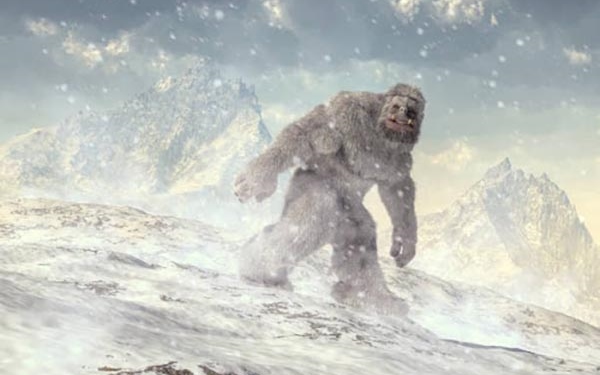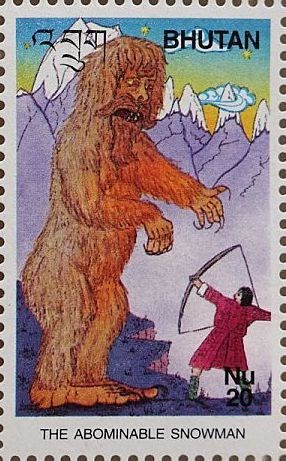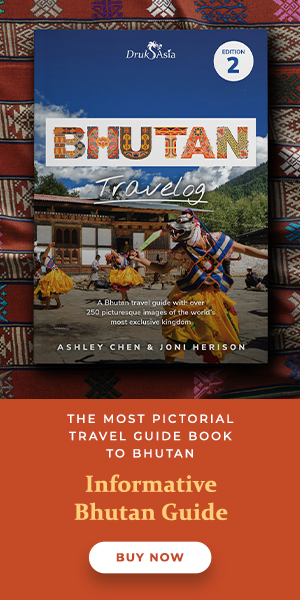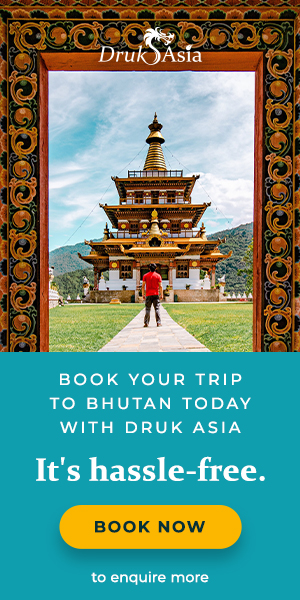There is a yeti preserve in Bhutan that is bigger than the size of Singapore
Wondering whether there are yetis in Bhutan? There is even a corpse!
 (Source: deskridge, DeviantArt)
(Source: deskridge, DeviantArt)
The yeti is a mythical ape-like creature that is believed to roam the Himalayas, known in western pop culture as the Abominable Snowman. Proof of the alleged yeti’s existence consists of anecdotal visual sightings, ambiguous video recordings, photographs, and cast of large footprints.
In the rest of the world, yetis are thought to be nothing more than folklore. Some say the yetis are just the misidentified Asian black bear.
But in Bhutan, the yetis and its smaller cousin, the Michum, are more than myths. They live, found on postage stamps, in rumours, and even in the form of a corpse!
The toughest hike in the world, located in Bhutan, is even named after the yeti: Snowman Trek.

The yetis (migoi)
Every culture has its “bogeyman” to keep the kids in line. In Bhutan, it’s the yetis (known to the Bhutanese as migoi). When Tuji was a kid, her parents would warn her to behave otherwise the migoi might come and catch her. The yeti never did appear, but Tuji was afraid whenever she took her cows to pasture in the forest.
What exactly is a yeti in the Bhutanese imagination?
According to Kunzhang Choden, author of Bhutanese Tales of the Yeti, yetis are double the size of a yak and live at 3,500 to 5,000 metres, which is the exact range of yak pastures. It has a hollow space in its back used to carry humans away. But if you are respectful during your encounter with the yeti, you might not get carried away.
So what should you do if you encounter a yeti? According to writer Tshering Tashi, the answer depends on its gender. If the yeti is male, you run uphill. The male yeti is hairy and trips while it climbs. On the other hand, if the yeti is female, you should run downhill. The female yeti is large with sagging breasts that would slow it down.
More than a bogeyman to scare kids, the Bhutanese are serious about their yetis.
The country even set aside 750 km² of the conservation area to protect the yetis in Bhutan, known as Bigfoot Valley in Sakteng Wildlife Sanctuary. Here, the yetis are free to roam in peace. For perspective, Singapore is 719 km², smaller than the reserved land for the yetis.
Bhutanese royal hunters regularly make expeditions into the mountains to search for the elusive yetis. Environmentalist Dasho Benji used to lead royal yeti searches. He sent hair samples to the cancer institute in Washington a long time ago. The result was inconclusive. They could not tell if the hair belonged to a human or animal, or what it even was.
To date, there has been no record of a human coming face to face with a yeti. Discovery Channel sent an expedition to Bhutan in 2009 to search for the yeti. An Oxford-trained evolutionary biologist, a primatologist, and a British technical whizz who managed the gadgets were sent into the Bhutanese mountains in search of the yeti. Armed with camera traps, videos, plaster of Paris for casting footprints, and jars for tissue samples, they ventured into the great Bhutanese mountains.
The team came back with nothing more than strands of hair, of which the DNA could not be sequenced, similar to Dasho Benji’s experience.
The Bhutanese have an explanation as to why the mysterious yetis are so hard to find. Yetis are supernatural beings beyond human comprehension. Thus they can do supernatural things like making themselves invisible. Furthermore, the Brokpa people of Bhutan believe that the yetis have backward-facing feet, which confuses humans who try to track them in the snow.

The michum
Yeti has a cousin species, the michum (“little man”), a mythological creature like the yeti, except smaller. It is part animal and part human, closely resembling an ape.
Kunzang Choden the author says that humans encounter michums more often than they do yetis. According to her, the michums live closer to humans and are more curious. They live in dense forests over 2,500 metres above sea level.
There is a centuries-old corpse of a michum housed deep in a monastery in Phobjikha Valley. The corpse is a metre-long, hollowed out, has a human-like face, fingers, toes, and rough skin like cow leather. Next to the corpse are detailed writings about this mysterious creature.
The corpse is powerful too. South Tyrolean mountaineer Reinhold Messner once took unauthorised photos of the corpse and that very evening, he was so ill that he had to be flown out. The Bhutanese believe that it was some kind of curse.
Present-day, it is believed that the King has forbidden foreigners from entering the chamber in the inner sanctuary where the michum corpse is located.
The mystery thickens.
So are yetis and michums real?
Tshering Tashi, writing for Kuensel, thinks so. He posited that the takin and the blue poppy flower, Bhutan’s national animal and flower respectively, were thought to be mystical until proven otherwise. Likewise, he said that the yeti is something the Bhutanese are convinced about, pointing to the huge yeti reserve.
Or perhaps, he suggested, the yeti could be an undiscovered humanoid species, like the Flores Man on the isolated island of Flores.
The study of faeces found during an expedition suggests that the yeti could simply be a group of Bhutanese whose physiology evolved to survive the harsh mountain conditions. Perhaps some Bhutanese tribes are not yet registered in the human DNA ‘library’.
Unlike Tshering Tashi, some of the younger Bhutanese find the belief in the yeti and michum backward, something that only old people believe in. This saddens Kunzang Choden. She wishes for the yeti and Michum to remain as part of the mystery of the Himalayas.
But she need not worry, because the fascination with the yetis and michum of Bhutan persists throughout the world, if the number of google hits is anything to go by.
What do you think? Myth or real? Book your trip to Bhutan and visit Sakteng Wildlife Sanctuary. Maybe you’ll be the one to come face-to-face with a yeti or michum.




